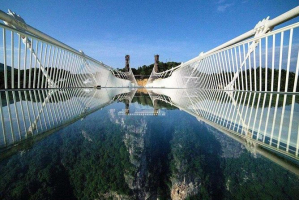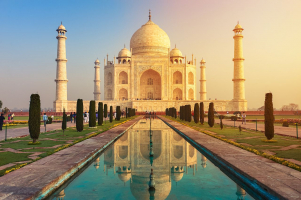Top 10 Most Famous Clock Towers Around The World
Nearly everywhere in the world, one can see clock towers with turret clocks on one or more of their faces. As early as the 18th century, they were constructed ... read more...in the middle of towns and cities to assist residents in keeping track of the time because it was uncommon at the time to own a personal clock or watch. Beautiful clock towers are now recognized as iconic landmarks all over the world. There were sundials on the earliest clock towers. The astronomical clock towers and later the turret clock towers appeared gradually. Take a look at these famous clock towers worldwide.
-
The Big Ben tower, a well-known landmark in London, immediately comes to mind when you consider the emblems of England. The largest of Westminster Palace's six bells is called Big Ben. Many people mistakenly believe that this is the name of the London clock tower, but in reality, the 13-ton bell that hangs inside the tower behind the clock dial is what the name refers to. Big Ben's official name was the Palace of Westminster Clock Tower. In honor of the 60th anniversary of the Queen's reign, the British Parliament decided to rename this English landmark Elizabeth Tower in 2012. Despite having other names, "Big Ben" continues to be the most widely used name for the tower, clock, and bell.
The clock tower in Westminster was built in 1288 and had a completely different appearance at the time. A terrible fire broke out in Westminster Palace in 1834, destroying everything. Charles Barry rebuilt it with the architect Augustus Welby Pugin, who designed the current clock tower in the neo-gothic style. When Big Ben was built in 1859, the mechanism for resetting the clock was initiated, and it still displays an exact time today. There are two widely used interpretations in whose memory the London clock was named. According to the first version, Benjamin Hall, who built Big Ben or, more specifically, oversaw its construction, is honored by the tower's name. The engineer was frequently referred to as Big Ben because of his rather large stature. A different spelling of the clock tower's name honors renowned heavyweight boxer Ben Caunt.
The tower with the spire is 320 feet tall (96.3 meters). Consider the high level of a 16-story building to get an idea of Big Ben's height. Because there are no elevators or lifts in the tower, it is not open to the general public. Exceptions to the rule are made on occasion, and visitors must master 334 steps to go upstairs.
The clock on London's Big Ben Tower is by far the biggest in the entire world. The dial has a 7-meter diameter. The arrows are 2.7 and 4.2 meters long. The clock mechanism, which weighs 5 tons in total, is regarded as the benchmark for truth. The machinery assembly, on which work was finished in 1854, was the responsibility of watchmaker Edward John Dent. A completely new double three-stage system was developed that allows for more effective division of the five-ton clockwork and pendulum. Even during the Second World War, the clock's dependability was demonstrated when German bombings damaged two dials and the tower's roof but had no effect on the mechanism's ability to run. As a result, this British landmark has come to represent the precision and dependability of all English. Furthermore, each dial has the inscription "God save our Queen Victoria I," which is also unmistakably in the English tradition.
Year of construction: 31 May 1859
Total Height: 316 feet (96 m)
Location: Westminster, London, UK
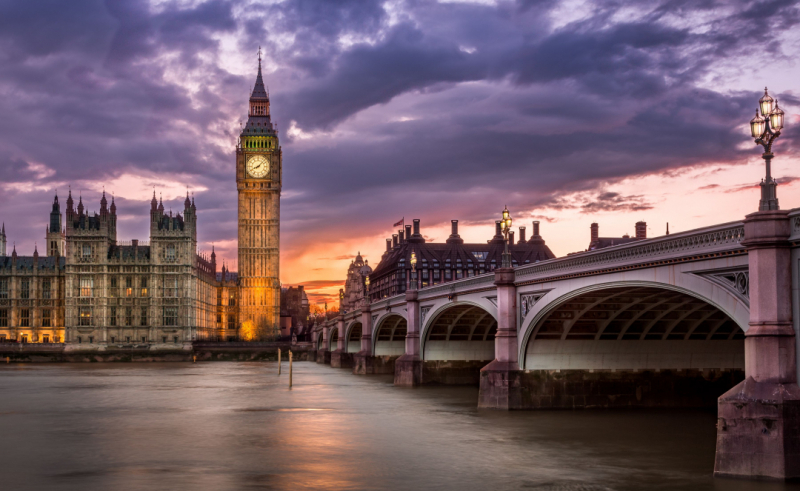
© steny02 / Shutterstock 
© ansharphoto / Shutterstock -
The Makkah Royal Clock Tower Complex, also known as the Abraj Al-Bait Towers, is a mixed residential and hotel complex situated close to Masjid al Haram in Mecca, Saudi Arabia. The Makkah Royal Clock Tower Complex, also known as the Abraj Al-Bait Towers, is a mixed residential and hotel complex situated close to Masjid al Haram in Mecca, Saudi Arabia. The complex's construction began in 2004 and was completed in 2012. The seven towers that make up the building's structure are raised above podiums. One of the ten tallest skyscrapers in the world, the tallest tower bearing the Makkah Royal Clock is 601 meters above the ground.
The Makkah Royal Clock Tower site encompasses 23ha to the south of the Masjid al Haram. To make way for the tower, the historic Ottoman-era Ajyad Fortress was demolished. The complex covers an area of 2.8 million square meters (21.5 million square feet). The building's seven towers are supported by a 15-story, 115-meter-high podium that houses a grand retail area. The tallest tower, which houses the Makkah Royal Clock Tower Hotel, is located in the center of the structure. The clock tower is flanked by six other towers: Hajar, ZamZam, Maqam, Qibla, and Marwah. The accompanying towers range in height from 200m to 300m, and the number of floors ranges from 42 to 48.
The 120-story Makkah Royal Clock Tower Hotel is an impressive building. It is the world's tallest hotel and clock tower, respectively. The clock above the hotel tower is notable for having the largest clock face in the entire world, measuring 43 meters on each side. Approximately two million LED lights are used to illuminate the clock faces. The clock tower is 251 meters tall from the bottom of the clock to the top of the crescent-shaped structure and weighs 36,000 tons. The tower has a 71-meter-tall spire above the clock, raising the building's height to 601 meters above the ground. A 23m-high crescent made of fiberglass-backed mosaic gold is also installed at the top of the tower. The clock tower's top 200m is made of fiber-reinforced plastic (FRP) composite panels.
The Makkah Clock Tower complex includes residential towers for long-term residents, the Abraj Al Bait shopping center, and a five-star hotel run by Fairmont Hotels and Resorts for Hajj pilgrims. There are more than 1,000 parking spaces available at the structure.
The tower complex also has a large prayer room with seating for more than 10,000 people, an Islamic Museum, and a Lunar Observation Centre. Five times a day, the tower complex's residents typically hold formal prayers. Up to 75,000 residents from all seven towers can exit the building through podiums in a planned manner during each prayer time thanks to Kone's effective people flow solution for the building complex.There are 79 elevators and 111 extra heavy-duty Transvario escalators on the podium. There are 94 elevators and 16 extra heavy-duty Transvario escalators in the clock tower. There are 12 elevators in the adjacent towers, including two helipad elevators and six extra heavy-duty Transvario escalators.
Year of construction: 2004 to 2012
Total Height: 1972 feet (601 m)
Location: Makkah, Saudi Arabia

Wikipedia 
TripAdvisor -
The Peace Tower, which towers over Parliament Hill at nearly 98 meters, is arguably the second most well-known symbol of Canada after the flag. On days when it is flown at half-mast and every day from Monday to Friday, the Peace Tower flag is changed. During inclement weather or statutory holidays, the flag is not changed.
The United Kingdom presented the Peace Tower clock to Canada in 1927. The gift commemorated Canada's 60th anniversary of confederation. The original clock is no longer operational and has been replaced. Visitors to the Peace Tower, on the other hand, can see it on display in the Tower's observation deck.
In total, there are four clock faces: one on each side of the Tower. An electric motor drives the hour and minute hands on each face. Its controls are on the master clock, ten storeys down the Tower. The National Research Council's atomic clock in Ottawa maintains the precise timing of the clock.The fact that the Tower's master clock cannot be rolled back always piques people's interest. Therefore, a government employee stops the clock for an entire hour overnight at the end of Daylight Saving Time in the autumn. The hour hand advances by one hour in the spring. Its chimes are momentarily turned off to stop them from ringing while work is being done.
The Peace Tower carillon is one of North America's oldest and most beautiful carillons. It has 53 bells and weighs 54 tons. The weight of these bells ranges from 10,090 kilograms to only 4.5 kilograms. The bourdon bell is the largest and heaviest, and it plays the low E note. The smallest and lightest bell, which is four and a half octaves higher, plays the A! The bourdon produces the sound you hear every hour. A large keyboard, resembling an organ, is used to play the carillon. A carillonneur is the person who plays the bells. The bells are chimed by carillonneurs hitting the keys with their fists. They must use their feet to press the keys in order to play the bigger bells. Actually, the bells don't swing. Instead, each bell is struck by a clapper with the same force as the carillonneur does with the key. The chiming clocks in Belgium and the Netherlands from the 17th century served as the inspiration for the Peace Tower carillon. International musicians travel to Ottawa to study this expertly tuned instrument.
Year of construction: 1927
Total Height: 322 feet (98 m)
Location: Ottawa, Ontario, Canada

theroadhome.ca 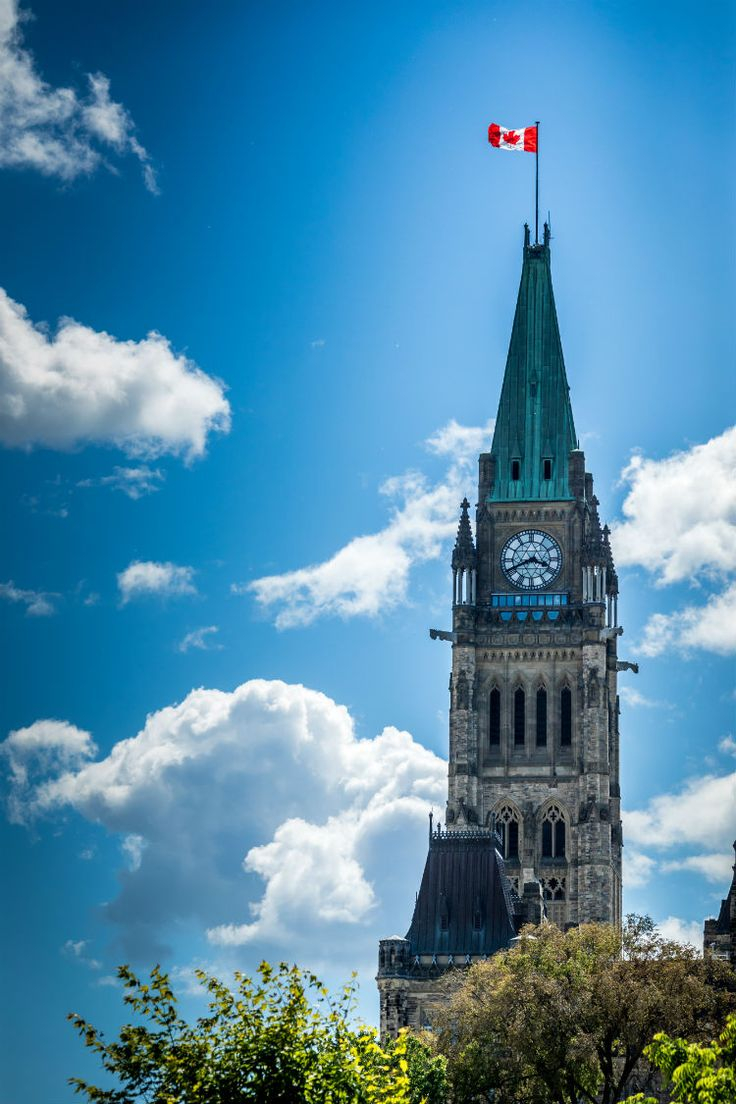
Pinterest -
The Astronomical Clock is a prominent feature of Old Town Square. It is located on the southern wall of Prague Town Hall and is such a captivating sight that it has possibly become the most photographed landmark by tourists visiting the Czech Republic's beautiful capital city. The clock is unique in that it displays the position of the sun and moon in the sky, as well as other astronomical information, in addition to the 24 hours of the day.
However, this intricate, historic clock, which is over 600 years old, has more than just the dial that makes it special. A sophisticated mechanism that propels the 12 apostles into motion when the clock strikes the hour drives several animated figures that appear in the procession of the apostles inside Prague's famous clock. It also has a calendar dial with twelve medallions representing the year's months.
The clock's oldest component was created in 1410 by Jan Sindel, an astronomy professor at Charles University in Prague, and clockmaker Mikulá of Kada. The dial is a type of astrolabe, with symbols for the sun, moon, and signs of the zodiac, which were significant in Prague in the fifteenth century, clearly visible inside the black circle. The golden numbers in the blue circle on the clock represent the hours of the day, and you can also see the aurora or dawn (on the left) and sunset (on the right).
The four figures surrounding the clock are allegories for vanity (a man holding a mirror), greed (a businessman with a bag of money), death (a skeleton with an hourglass), and extravagance (a skeleton with an hourglass) (a Turk prince playing the mandolin). They begin to dance when the clock strikes the hour: the vain man looks in the mirror, the greedy man moves his bag, the skeleton shakes the hourglass to indicate the time, and the extravagant man moves his head. Meanwhile, hundreds of tourists are captivated by Prague's Old Town Square.
The apostles' procession, in which the windows open and the figures approach one by one, is taking place at the same time as this entire spectacle. St. Paul with a sword and a book is visible in the left window, followed by St. Thomas, St. Jude Thaddeus, St. Simon, St. Bartholomew, and St. Barnaby. While in the right window, we see St. Matthias, St. John, St. Andrew, and St. James, along with St. Peter holding the keys to the heavenly kingdom. A rooster crows, followed by the ringing of bells, signal the conclusion of the spectacle as the windows finally close.
On the lower part of the clock, there are 12 medallions representing the months of the year, designed by Czech painter Josef Mánes, as well as four other figures: a philosopher, an angel, an astronomer, and a chronicler.
Year of construction: 1410
Total Height: 228 feet (69.5 m)
Location: Prague, Czech Republic

The Astronomical clock in Prague - www.barcelo.com 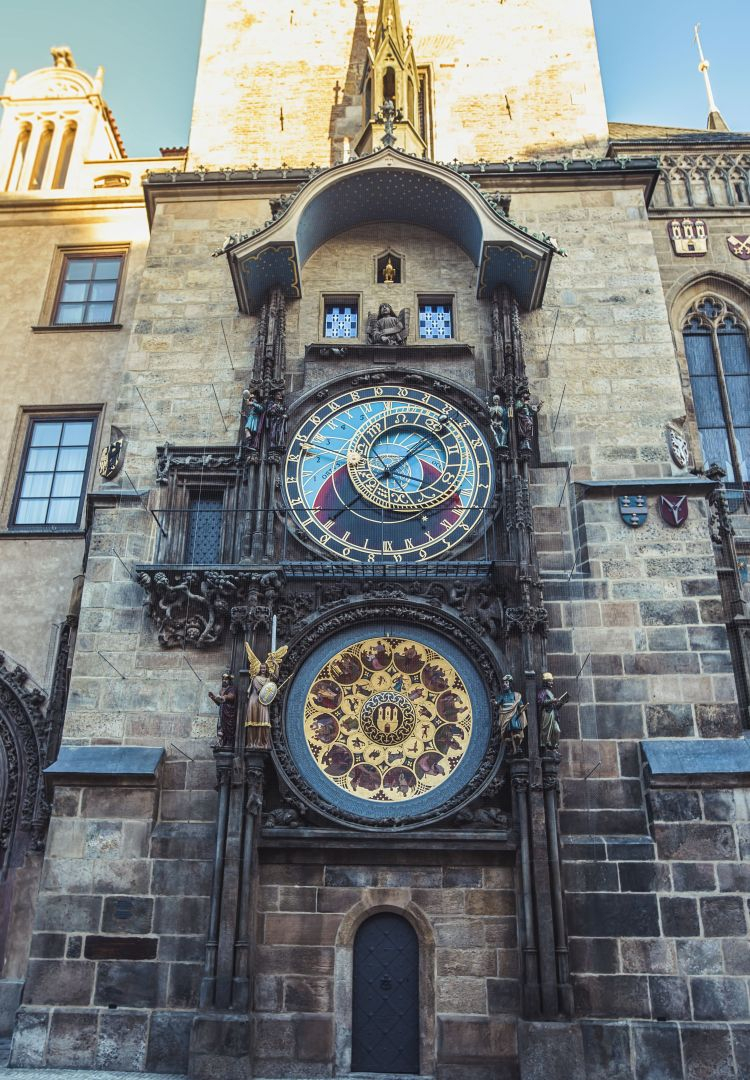
Prague.eu -
Rajabai Tower is a well-known clock tower in South Mumbai. It is located on the Mumbai University Fort Campus, next to the High Court. The tower is unquestionably a work of exquisite beauty. It has grown into one of Mumbai's most popular tourist destinations. Sir Gilbert Scott designed the tower after seeing the Big Ben clock tower in London. The tower's foundation stone was laid in March 1869. The majestic tower houses a large clock that can be seen from afar. At regular intervals, the clock also plays melodic tunes. The tower is richly decorated with oriental figures and has many impressive features. Do not skip a visit to this location if you are on a tour to Mumbai. It is among Mumbai's most beautiful architectural designs. The mother of Premchand Roychand, the company's founder, is honored with a tower named Rajabai.
The first step toward the construction of the Rajabai tower was taken on March 1, 1869, when the foundation stone was laid. The model was inspired by Sir Gilbert Scott, an English architect. Premchand Roychand, a wealthy broker who founded the Bombay Stock Exchange, agreed to fund the tower's construction. The total cost of the monument after construction was estimated to be Rs.2 lakh, which was a large sum in those days.
The name Rajabai tower is a tribute to Premchand's blind mother. Because Premchand's family adhered strictly to Jainism, his mother ate dinner before sunset, and the tower's evening bell helped her tell the time on her own. Then she would eat the meal by herself. Premchand wanted the tower to be named after his mother Rajabai because he was the only one who contributed to its construction.
Rajabai Tower is praised for its incredible architecture. It offers viewers a beautiful fusion of the Gothic and Venetian architectural styles. The buff-colored Kurla stone, which was widely available in Mumbai at the time, was the primary building material used in its construction. One of its best features is the stained glass windows, which are frequently regarded as the best in the city. Two rooms and a narrow staircase can be found on the tower's ground floor. From the ground level to the top of the first level, where a gallery is located, the tower has a square shape. The tower then changes to an octagon shape. Among the sixteen tunes played during the British era were "Rule Britannia," "God Save the King," "Home! Sweet Home!" and "A Handel Symphony." The music was changed four times per day. However, only one tune is now played every fifteen minutes. In addition, the tower was closed to the public following several reports of suicidal attempts by visitors.
Year of construction: 1 March 1869
Total Height: 280 feet (85 m)
Location: Mumbai, India

Somaya & Kalappa Consultants 
Peaklife -
The Spasskaya Tower (Tower of the Saviour), the tallest and most impressive structure in the citadel, is situated on the Kremlin's eastern side, close to Moscow's Red Square. An enormous clock on the tower keeps track of the city's official time.
The tower was built as the main entrance to the Kremlin complex in 1491, during the reign of Ivan the Great. The gateway could only be used by heads of state or high officials in Tsarist Russia, and they had to dismount their horses and remove their hats as a mark of respect when passing through the imposing red brick tower. Legends persist that the Spasskaya Tower possessed magical powers to protect the Kremlin from enemy invasions!
Stalin replaced the imperial symbol of the two-headed eagle on top of the Spasskaya Tower with a red star during the Soviet Union, and its height with the star is 233 feet (71 meters).Undoubtedly one of Moscow's most recognizable structures is the Spasskaya Tower. Its prominent location on Red Square, next to Saint Basil's Cathedral, ensures that everyone who visits Moscow brings back photos of it from their trip.
In addition to keeping track of official Moscow time, the tower's enormous 20-foot (6-meter) diameter clock is also responsible for signaling the start of the New Year. Similar to Big Ben in London or the clock in Madrid's Puerta del Sol, the event draws thousands of residents together each year under its watchful gaze.Year of construction: 1491
Total Height: 233 feet (871 m)
Location: Moscow, Russia

Russia Beyond 
Pixels -
At the time of its construction, Philadelphia City Hall, located at 1400 John F. Kennedy Boulevard in Center City, was both innovative and inspired by traditional design. The municipal floors and clock tower have stone walls, cornices, pillars, and decorative elements that have wowed the public. The 548-foot structure was designed by John McArthur Jr. and Thomas Ustick Walter, both of whom have worked on other notable structures. The First National Bank was designed by John McArthur Jr., and the new and current dome of the Capital Building in Washington D.C. was designed by Thomas Ustick Walter. Although the highest point in the building is nine floors up, the clock tower, which was built shortly after the municipal floors, is hundreds of feet tall.
The Philadelphia City Hall clock is a unique marvel that dominates the city. The tower was intended to be the tallest building in the world, but the Eiffel Tower outstripped it with a height of 301 meters. Nevertheless, the City Hall held the record for the tallest occupied building until 1908. As you ride the elevator to the observation deck at the top of the tower, you can see the amazing mechanisms at work in the clocks and towers. At the top of the clock tower are several bronze statues that depict William Penn and the original inhabitants of Philadelphia, who were Swedish and Native Americans.
Year of construction: 1898
Total Height: 548 feet (167 m)
Location: Philadelphia, Pennsylvania, US

sworld.co.uk 
Philadelphia YIMBY -
The Rathaus-Glockenspiel in Munich, Germany, is a well-known tourist attraction that is situated in Marienplatz, the heart of the city. The building was designed by Georg Hauberrisser and finished around 1900. The performance shows the union of Duke Wilhelm V and Renata of Lorraine, as well as the traditional cooper's dance and jousting match. The 260-foot tower's 43 bells and 32 life-size statues recreate two historical events twice a day.
The story of the extravagantly lavish marriage of Bavarian Duke Wilhelm V in 1568 is told in the clock's upper section, where mechanical jousters depicting Bavaria in blue triumph over knights of Lothingren in red. The royal joust, which took place in the Marienplatz where the clock is now, was the highlight of the original celebration, which lasted two weeks and was attended by thousands of revelers.A few blocks away is the Hofbraeuhaus, the city's first brewery, founded by Wilhelm V to meet his needs for a brown ale. Aside from his lavish wedding and beer, Duke Wilhelm V was also known as a militant Catholic leader who took increasingly drastic measures in both personal piety and public anti-Protestant policy. Under his leadership, Bavaria became known as the epicenter of early counter-reformation actions, including the final expulsion of Catholics from Bavaria and numerous witch hunts - a legacy that his son Maximillian I carried on after his death.
Coopers (barrel makers) perform their signature Schäfflerstanz on the glockenspiel's lower section. The Schäfflerstanz, or Cooper's Dance, is supposedly connected to the end of a plague in 1517 when the neighborhood coopers used some foot-slapping dancing to entice the terrified citizens back out onto the streets. Munich did experience a terrible plague in 1635 that killed off about a third of the population, though the details may be apocryphal. The Schäfflerstanz, regarded as one of the last authentic guild dances in Germany, is customarily performed by live dancers every seven years during the Fasching festival.
A small golden bird chirps from the top of the glockenspiel at the end of the show. The entire performance lasts about 15 minutes.
The glockenspiel, a relatively new addition to the ancient town square, was built in 1908 as part of the second half of the gingerbread Gothic-revival New Town Hall. Surprisingly, the building escaped major damage during WWII's heavy bombardment, which left other nearby buildings without roofs. The carillon was apparently out of tune during a 2007 renovation, but this has since been corrected.Every day at 11 am, the show begins. In the summer, there are additional 12- to 15-minute shows at noon and 5 pm. Visit the Hugendubel bookstore across the street and ascend to the third floor for a better vantage point.
At 9 o'clock in the evening, two figures - an angel on one side and a night watchman on the other - make a more subtle appearance.Year of construction: 1908
Total Height: 260 feet (79 m)
Location: Munich, Germany

Wikipedia Explore's Youtube Channel -
Malaysia has a clock tower to be proud of, but it has a clock on only one side, unlike London's four-faced clock tower. The Sultan Abdul Samad building is a stunning and historic structure, but that doesn't make the clock tower any less important. In fact, it probably has more significance to shout about because it is next to it. When the building was being built, it was given the name of the then-Sultan of Selangor.
The structure is a well-known landmark in Kuala Lumpur. The Sultan Abdul Samad Building, located in the heart of Jalan Raja, was designed by A.C. Norman. The structure has Moorish influences as well as a blend of local culture and British styles. Before finally completing the building in 1897, the architect added an Islamic touch to represent the Malaysian people's identity.
The Sultan Abdul Samad building was a crucial building for the English back then. It was and still is a stunning, recognizable structure that was probably the subject of most photos at the time. The structures were once used by the English as the government's administrative headquarters. Later, the structure housed the supreme and high courts before being renamed the Federal Court of Malaysia and relocated to Putrajaya's Palace of Justice. Today, the Malaysian Ministry of Information, Communication, and Culture is housed in the Sultan Abdul Samad building.
The building isn't the only attraction; nearby is a 40m clock tower known as Malaysia's "Big Ben," which is topped with a golden dome and flanked on both sides by two domed towers. In the eyes of visitors, the clock's chimes indicate the time. The chime of the clock, however, is enough to bring back memories and send a tingly feeling down the spine of locals who have stood by the country throughout its year-long battle against foreign inhabitation. For this very clock signaled independence at the stroke of midnight on August 31, 1957. Since then, the chimes have represented the nation's hope that freedom and peace will continue in the future on the country's anniversary of independence.
The tower will twinkle its way into your eyes on the nights of significant occasions like Independence Day with its gorgeously colored lights. Some have claimed that the scene resembles an Arabian night because the building has such incredible architecture and designs.
Because the administrative council recognizes how beautiful the building is and how much people enjoy admiring it, Jalan Raja is closed on nights of special celebrations to allow the public easier access to the structure. There aren't many buildings like this in Malaysia, one that demonstrates Malaysia's and the English's rich history. So stop by the Sultan Abdul Samad Building for a dose of history and a visual treat.
The Sultan Abdul Samad Building is close to Merdeka Square, Chinatown, which is home to a number of temples and a famous tourist market, as well as the lovely Central Market.
Being in the heart of Kuala Lumpur, Sultan Abdul Samad Building is simple to reach. You can easily get to the building if you are staying in Chinatown. The building's direct neighbor, Merdeka Square (Independence Square), can also be reached by following signs pointing in that direction. The location of this famous spot in KL is well known to all cab drivers. You can also travel to Pasar Seni or Masjid Jamek stations on the LRT. The Sultan Abdul Samad Building is reachable in either situation after a 5–10 minute stroll.
Year of construction: 1894-1897
Total Height: 135 feet (41 m)
Location: Kuala Lumpur, Malaysia

Safarway 
Viator -
The Zytglogge (Clock Tower) is one of Bern's most well-known landmarks, and it is situated right in the middle of all the city's other well-known landmarks in the Old Town. Bern's typical streets, lanes, and buildings all have fascinating stories to tell. The Clock Tower, which was once a city gate, now draws tourists from all over the world.
Large crowds gather in front of the clock tower in Bern's Old Town to watch the unique performance that always occurs at this time. The clock is about to strike the hour. Young and old visitors come from far and wide to see the mechanical figures, which include a procession of bears, a jester, a golden rooster, and Chronos, the god of time.
However, in the interior of the tower, time seems to have stopped. Visitors are transported back in time by medieval clockwork mechanisms, thick stone walls, and enormous wooden beams. Those who climb the 130 steps inside the structure are rewarded with a stunning view of the UNESCO World Heritage Site, complete with tiled roofs, terraces, and narrow lanes. When the sky is clear, you can see all the way to the Bernese Oberland's peaks.A fortified guard tower was built there first, followed by a prison, a lookout and fire observation tower, and then a clock tower. This landmark has served the city of Bern in a variety of ways over the years, but it has always been important. The former guard tower gradually found itself closer and closer to the city center as Bern continued to develop and expand its city limits. Following the terrible fire of 1405, the building was rebuilt and given a new name.
It began telling time for the people of Bern as the Zytglogge (Clock Tower). Its location as the official timekeeper could not be more central, and from then on, the locals listened for it to strike the hours.
The tower was also an authoritative structure in the capital city for other matters. Official travel times, for example, were measured from the Clock Tower and marked on stones along cantonal roads. The ancient length measurements of cubit and fathom, which are still marked in the tower entrance as meter and double meter today, served as a reference length and for official checks.The astrolabium, an astronomical calendar clock, and the musical mechanism installed in 1530 are the tower's most notable features.
A crowing rooster heralds the start of an entertaining spectacle just before the hourglass strikes. The quarter-hour chimes can be heard from the tower, bears perform their hourly routine, a jester jokingly signals the hour too early, and Chronos, the god of time, flips his hourglass. Finally, Hans von Thann's gilded figure swings Chronos' scepter to strike the hour.The astrolabium's hands move slightly slower but just as precisely. The astronomical calendar clock's discs are artfully arranged above the Zytglogge Clock Tower's entrance. With the earth in the center, both fixed and rotating spheres form an exact replica of the constellations. The sun, moon, and stars orbit our planet in the orbits we can see from Earth.
The northern hemisphere's complex display always shows the current zodiac sign, moon phase, sunrise and sunset times, and the date. The space above the astrolabium is adorned with frescoes of the five planetary gods from Roman mythology.Year of construction: 1191 and rebuilt in the 15th century
Total Height: 179 feet ( 54.5 m)
Location: Bern, Switzerland

The astronomical calendar clock from the year 1530 - www.bern.com 
Kevin Bowling's YouTube














